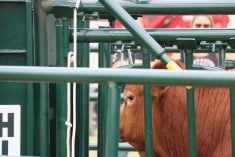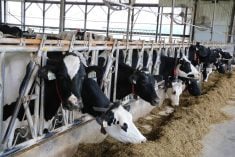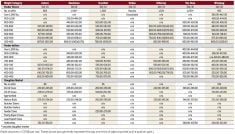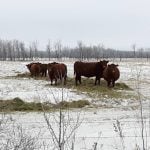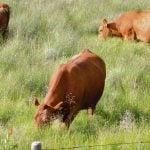The Rural Veterinary Task Force (RVTF) held public consultations in Dauphin, Brandon and Stonewall last week as a part of an overall review of the provincial service.
Task force members include Dr. Paul Schneider, Merv Starzky, and Bertha Russell-Langan. They have met virtually every aspect of the rural veterinary services system, including practising veterinarians, veterinary students, recent graduates, members of Veterinary Services Boards (VSB) and municipal councillors as well as users of the services.
The structure of Manitoba’s rural veterinary services is unique in Canada, in that it is a tiered system where funding is provided from the provincial government and groups of municipalities that then govern the clinics through a VSB.
Read Also

Beekeepers want financial protection against tropi mite
What happens to beekeepers if the deadly tropi mite reaches Canada? Discover why farmers want robust compensation to protect pollination.
“Each clinic has participating municipalities and they all send one representative and that group elects a chairman. That board then administers the funds and functions of those clinics,” Starzky said. “There is usually a provincial body involved in the board as well. In our case in Shoal Lake, it is the local representative from Manitoba Agriculture, Food and Rural Development (MAFRD).”
The boards are then overseen by the Veterinary Services Commission, which Russell-Langan chairs.
“The role of the commission is that we oversee the VSB. We ensure that they are following the Manitoba Veterinarians Act, our policies and, at times, we act as an arbitrator between the board and veterinarians, as well as a liaison between the boards and the minister,” Russell-Langan said.
As part of the review process the RVTF has been looking at other jurisdictions to compare the pros and cons of this system.
At the public consultation in Brandon on Oct. 21, the task force members agreed that Manitoba’s structure is beneficial in keeping clinics in rural areas, as clinics in other structures tend to be concentrated in urban areas, increasing the distance producers would be required to travel for service.
“Having these clinics in rural areas is mandatory,” Russell-Langan said. “Sometimes people think that we are holding these meetings to determine which clinics to close and that is not our purpose at all. The whole idea is to hear what users need and then bring forward recommendations that will maintain or improve the service.”
RVTF members added that they have heard from a number of groups that veterinarians are a valued local reference for biosecurity and animal welfare issues.
Previous reviews
In 2008, a similar task force examined the province’s veterinary services and provided the minister of agriculture with a report and recommendations.
The current RVTF will be looking at the progress of those recommendations as well as examining how the industry has changed in terms of farm size, diversification and advancements in technology.
“It is interesting to see from the livestock perspective, the evolution of the farms, and how those aspects are impacting demand,” Schneider said. “Part of what we are looking into also, is seeing where the recommendations from the previous task force have gone. The majority we have seen has had some action but we also want to look at some of the others that have had obstacles and barriers for implementation.”
Industry changes and challenges
Russell-Langan said that one thing the task force has been hearing is that a number of producers has installed better livestock-handling facilities, which is allowing veterinarians the ability to work in comfort and safety on site and avoid the need to transport animals to clinics.
“This is beneficial in a number of ways. While the vet is on the farm they are also able to have a look around and offer advice or recommendations for further animal welfare and biosecurity issues,” Russell-Langan said.
“Veterinarians are really on the front line. It becomes an important aspect to have them out there for surveillance, early detection of disease, as well as encouraging that certain diseases like rabies are controlled, which then also becomes about ensuring vaccinations are locally available,” Schneider said.







